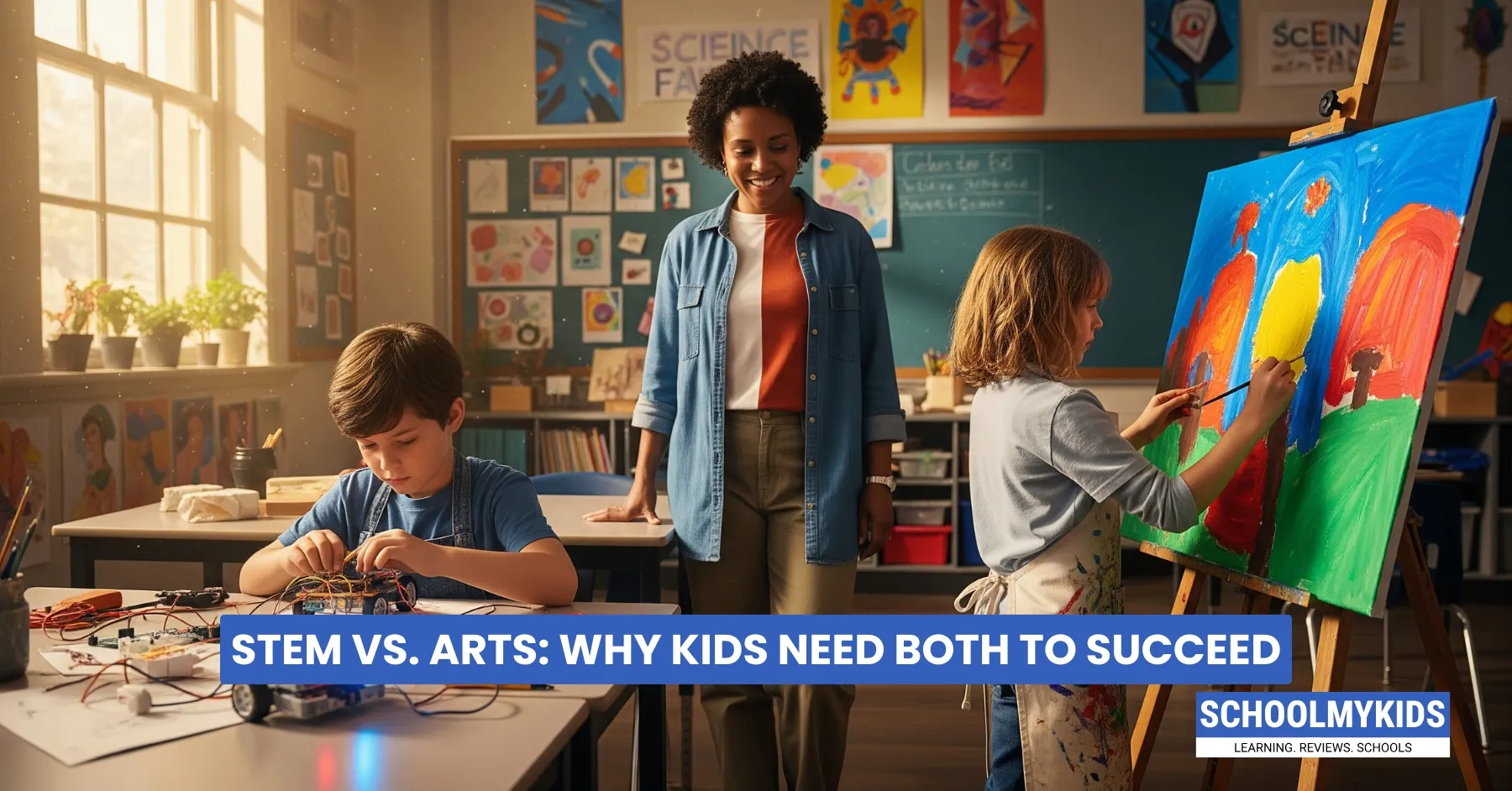We all dream of seeing our children succeed, not just in school, but in life. When it comes to education, many of us find ourselves wondering how to best prepare our kids for a future that’s changing faster than ever before. These days, this conversation often feels divided: Should my child focus on science, technology, engineering, and math (STEM) for stable careers and skills? Or should they pursue arts, music, literature, and creativity for passion and expression?
The truth is, your child doesn’t have to choose one or the other. In fact, kids thrive when they learn from both worlds.
Let’s break it down together so you can help your child grow in ways that matter.
What Is STEM?
STEM stands for Science, Technology, Engineering, and Mathematics. These subjects help kids:
- Understand the world logically and scientifically.
- Solve real-life problems using data, experiments, and critical thinking.
- Get ready for careers in medicine, engineering, research, technology, coding, and more.
A STEM-focused education builds skills like analyzing data, asking smart questions, and finding solutions. Kids become curious thinkers who want to figure out how things work and how to improve them.
What Are the Arts?
Arts include subjects like visual art (painting, drawing), music, literature, theatre, dance, and creative writing. Even in India’s rich educational tradition, the arts have always been celebrated for helping children:
- Express their feelings and ideas.
- Build empathy and understand other perspectives.
- Develop imagination and original thinking, which are essential for innovation.
Arts let kids turn thoughts into songs, emotions into paintings, and stories into scripts. Through practice, they learn how to communicate, listen, and appreciate beauty in everyday life.
Why Focusing on Just One Side Isn’t Enough
Today, success isn’t just about scoring well in exams or picking a “safe” career. The best opportunities go to people who can think deeply and creatively, whether they’re engineers designing cities, doctors treating patients, or designers building the next big app.
When kids only study STEM subjects, they might struggle to express their ideas, work in teams, or think outside the box. When kids only train in the arts, they might miss out on the problem-solving approach, logical thinking, or technical know-how that’s increasingly important, even in creative fields.
How STEM and Arts Work Together
STEM and Arts complement each other perfectly. When joined, it’s sometimes called STEAM (Science, Technology, Engineering, Arts, Mathematics).
- Problem Solving Meets Creativity: Maths and science teach kids how to solve problems methodically. Arts help them dream up new ideas and solutions.
- Communication Skills: Artists are great at expressing thoughts. Scientists and techies need these skills to share their findings, teach others, or pitch inventions.
- Collaboration and Empathy: The best teams are made of people who work well together and understand feelings, something the arts build naturally.
- Innovation Needs Both: Almost every major invention, from smartphones to medical devices to movies, needed people with STEM plus artistic skills.
What Does This Look Like in Today’s Education?
Schools worldwide are moving toward mixed learning, offering coding clubs and robotics alongside drama and painting. New-age education encourages students to:
- Build robots and tell stories about them.
- Write creative reports based on scientific experiments.
- Use programming to make digital art or compose music.
- Apply mathematical thinking to make better designs and art.
Competitions like science fairs and art fests often work best when students use both sets of skills, like making models, explaining ideas, and presenting them confidently.
Even university admissions and job recruiters look for students who show strengths in both technical skills and soft skills like creativity, teamwork, and communication.
How Parents Can Help Kids Get The Best of Both
- Encourage curiosity: Let your child ask questions in both science and art. Support their hobbies, whether it’s origami, chess, or writing poems.
- Mix learning opportunities: Try museum visits, coding camps, book readings, and painting workshops.
- Be open-minded: Don’t push kids into just one path. Instead, let them explore and discover what they love.
- Celebrate all successes: Whether your child wins a math prize or paints a beautiful picture, show them both achievements matter.
What If My Child Loves One More Than the Other?
It’s normal for kids to have favorites. If your child is passionate about math, encourage them to try out music or drama to boost creativity. If they adore art, motivate them to join science clubs or math games for problem-solving skills. The idea isn’t to force them equally, but to give them the chance to use both sides for fulfilling growth.
No matter which path they take, being flexible and balanced will help them shine in school and real life.
Conclusion
As schools, workplaces, and the world keep changing, kids need both STEM and Arts to truly succeed. With your support, they can build clever minds, kind hearts, and bright futures, no matter what career or life they choose. Think of this journey as helping them build a toolbox, filled with more than one kind of skill. That’s exactly what prepares them for whatever tomorrow brings.









Be the first one to comment on this story.